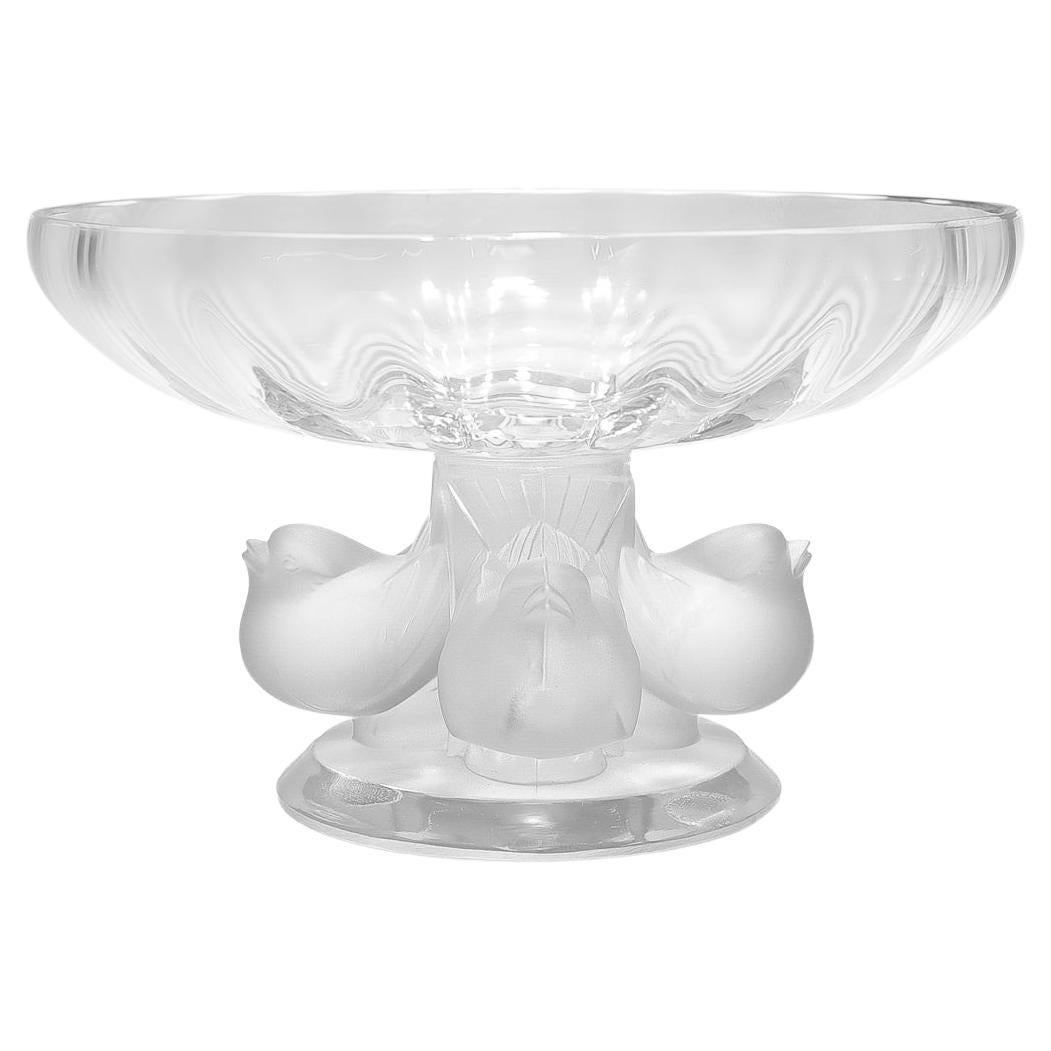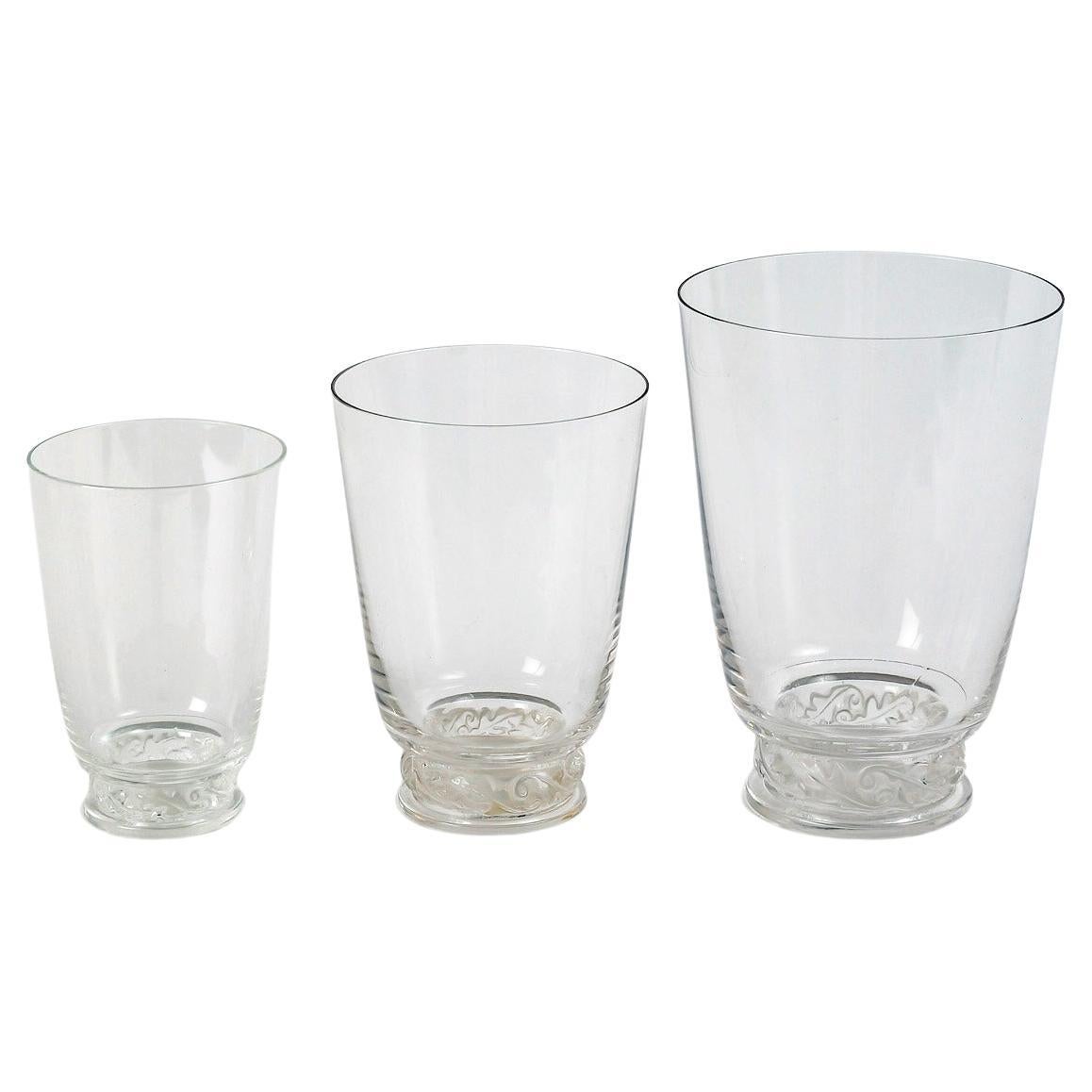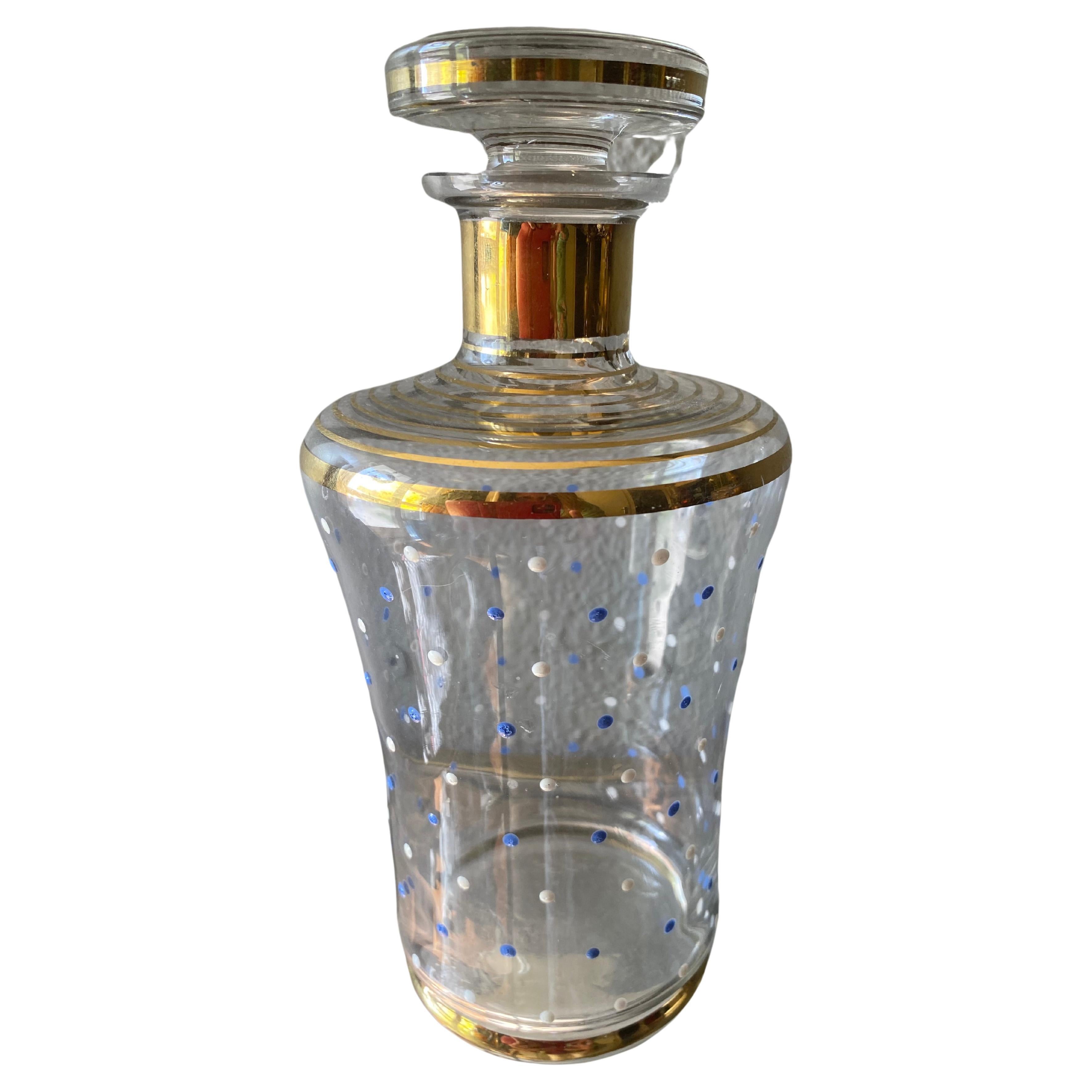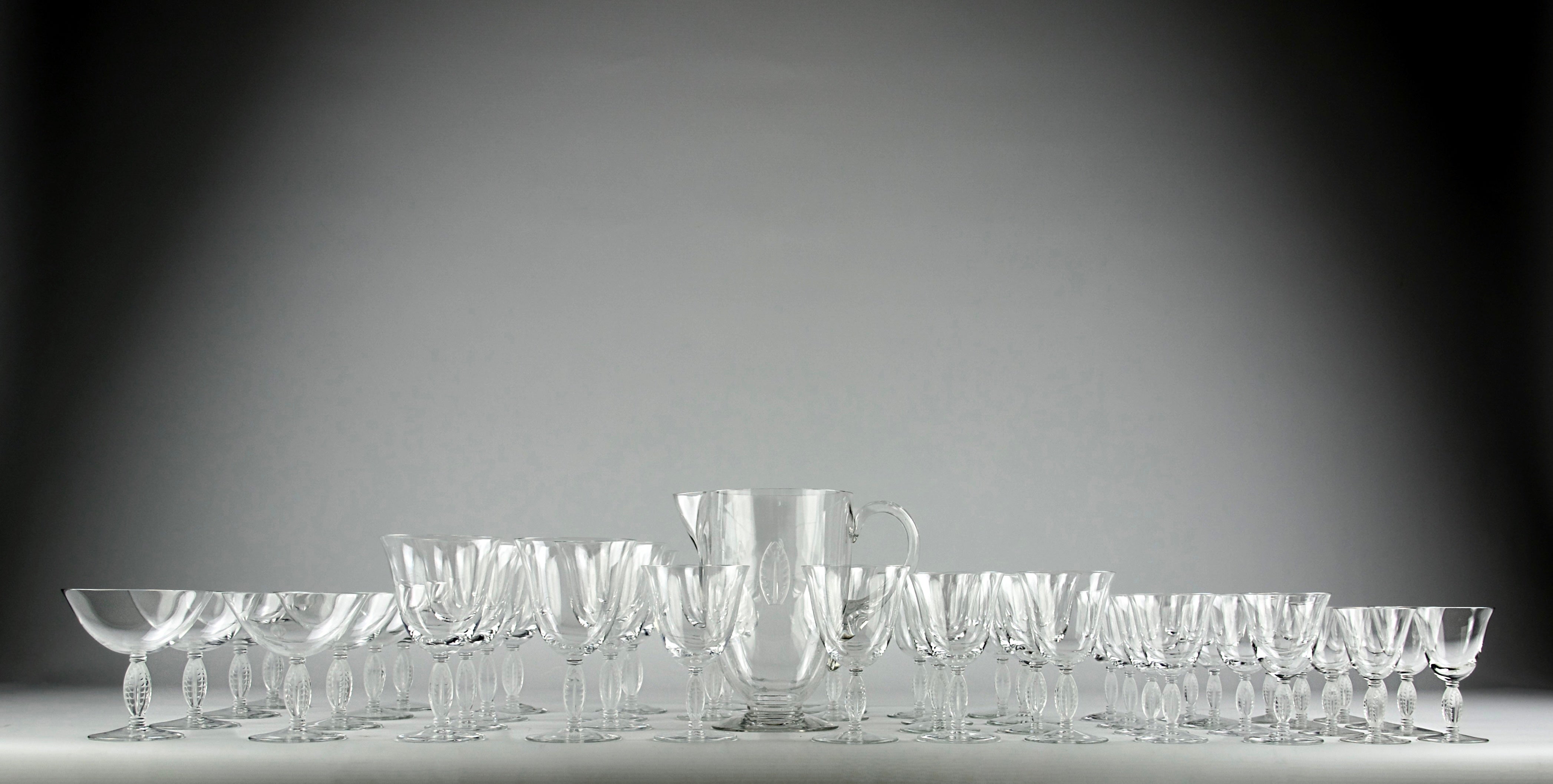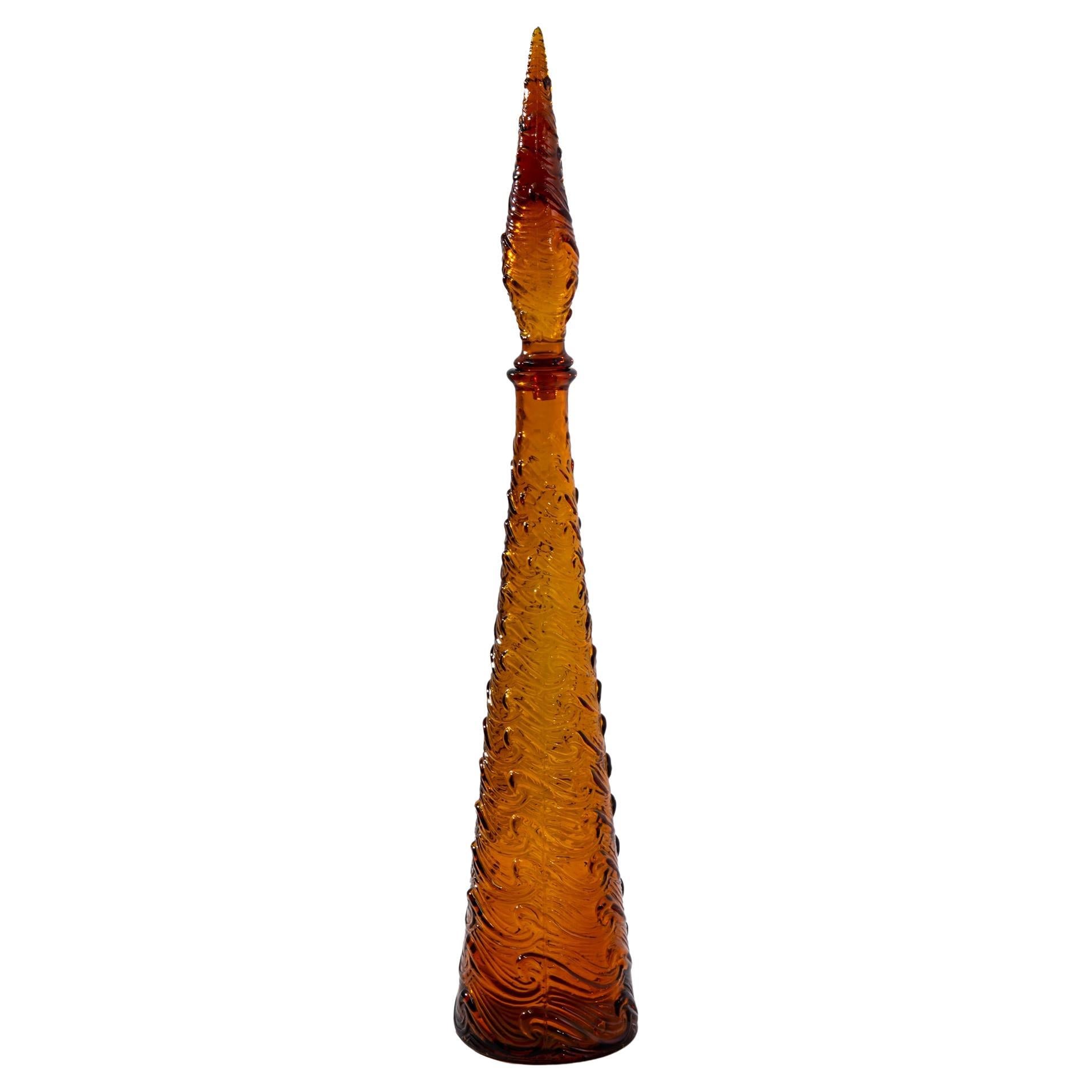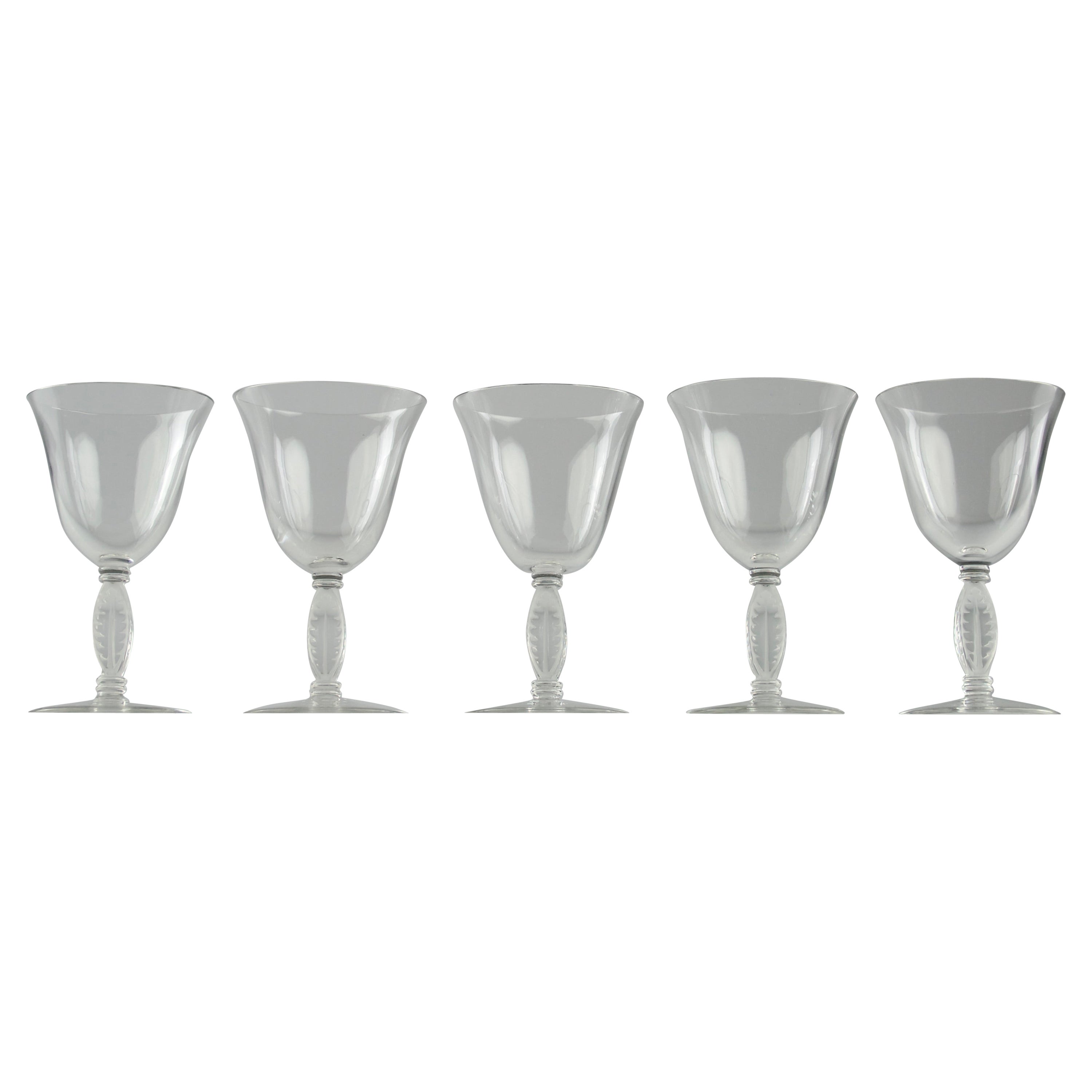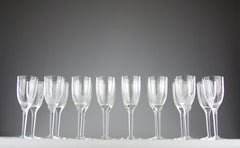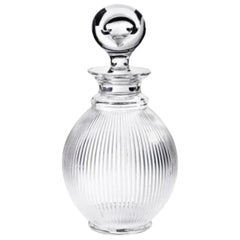
Lalique "Langeais" Carafe
View Similar Items
1 of 4
Lalique "Langeais" Carafe
About the Item
- Creator:Marc Lalique (Artist)
- Dimensions:Height: 5.52 in (14 cm)Width: 1.97 in (5 cm)Depth: 3.15 in (8 cm)
- Style:Art Deco (In the Style Of)
- Materials and Techniques:
- Place of Origin:
- Period:
- Date of Manufacture:1976
- Condition:
- Seller Location:Saint-Ouen, FR
- Reference Number:1stDibs: LU2194321530572
You May Also Like
- Vintage Lalique Nogent Compote "Footed Sparrows" BowlBy Lalique, Marc LaliqueLocated in Philadelphia, PAA fine Lalique compote or footed bowl. In the Nogent pattern (or Sparrows design). With a frosted finish pedestal and base supporting a transparent scalloped bowl. Designed by Ma...Category
20th Century French Art Deco Glass
MaterialsArt Glass
- 1950 Marc Lalique - Tablewares Saint Hubert Crystal Glasses Tumblers GobletsBy Marc Lalique, LaliqueLocated in Boulogne Billancourt, FRSet of Tablewares Glasses Tumblers "Saint Hubert" made in clear crystal by Marc Lalique in the 1950s. All tumblers are signed. Perfect condition. 36-piece set including: - 12 tumbl...Category
Vintage 1950s French Art Deco Glass
MaterialsCrystal
- Lalique, "Smile of the Angel" Champagne Glasses (16), France 1980By Marc LaliqueLocated in PARIS, FRSuperb service of sixteen champagne glasses "Smile of the Angel" also titled "Angel of Reims" designed by Marc Lalique for the Lalique Maison. In very good condition. One glass with a small chip on the lip. Dimensions in cm (H x D): 20.4 x 7 Secure shipping. The Lalique Maison was created by René Lalique who was one of the greatest artists of his time, whether as a jeweler or master glassmaker. He marked the Art Nouveau and Art Deco periods with his unique style. Lalique is recognized as one of the most important jewelry designers and glass maker of the French Art Nouveau period, creating innovative pieces for Samuel Bing's new store in Paris, Maison de l'Art Nouveau. He began exhibiting his work under his own name as early as 1894, notably at the Salon des artistes français, 1897 and 1898. The great glassmaker Émile Gallé discovered him at the first one and praised him highly. His stand at the 1900 Universal Exhibition in Paris was a great success. While keeping sources of inspiration from the Art Nouveau woman, fauna and flora - including the peacock, various insects and sometimes a fantastic bestiary - he innovated by using materials barely used for jewelry at the time: glass, enamel, leather, horn, mother of pearl, often preferring semi-precious stones to precious stones. The introduction of volume in jewelry is facilitated by his knowledge in modeling. He designed his models, having them made by a team of chisellers, sculptors and enamellers that he carefully recruited. Many women from the nobility, the bourgeoisie and the entertainment world began to wear his extraordinary jewelry, such as the Marquise Arconati-Visconti, the Countess of Béarn, Madame Waldeck-Rousseau, and Sarah Bernhardt, for whom he created a stage costume in 1902 for the revival of the play Théodora at the Sarah-Bernhardt Theater. Lalique was the only modern artist whose client and friend Calouste Gulbenkian became. Gulbenkian acquired the famous Pectoral à la libellule (circa 1897-1898), a masterpiece much admired at the 1900 World's Fair, which he lent to the tragedienne Sarah Bernhardt. After the end of the First World War, Lalique's colorful and fantastic jewelry were no longer in fashion. The creator sensed this and decided to convert to the Art Deco style through glassware in 1920. Thus, the neo-classical and geometric Art Deco replaces Art Nouveau. According to Olivier Mauny, former CEO of Lalique, his creations paved the way for an industrialization of art objects, because one of the best ways to include luxury and aesthetics in everyday life is to make everyday objects. He will create many objects such as vases, cups, candlesticks, perfume bottles, radiator caps for the Citroën 5CV (1925), decorations for the restaurant cars of the Côte d'Azur Pullman Express (1929), decorations for the dining room of the first class of the Normandie liner...Category
Vintage 1980s French Art Deco Glass
MaterialsCrystal
- Art Deco CarafeLocated in Waddinxveen, ZHIn a good condition beautiful Art Deco carafe with blue and white dots. The carafe is probably from Belgium or France.Category
Vintage 1950s Belgian Art Deco Glass
MaterialsBlown Glass
$191 - Bilboquet CarafeLocated in Richmond, VAGlass carafe in amber with lilac sphere stopper. Designed by Sophie Lou Jacobsen in New York. Made of lightweight and durable borosilicate glass...Category
21st Century and Contemporary American Modern Glass
MaterialsGlass
$175 / item - Lalique After René Lalique, Fontainebleau Service, France 1950sBy René LaliqueLocated in PARIS, FRSuperb Lalique Fontainebleau service composed of 41 pieces in sets of 8 and one carafe. This service has champagne coupes, water, red, white wine...Category
Vintage 1950s French Art Deco Glass
MaterialsCrystal
Recently Viewed
View AllMore Ways To Browse
Venetian Swirled Glasses
Tall Vases with Flowers
Artistic Barovier
Retro Blenko Glass Decanter
Antique Blue Glass Wine Glasses
Footed Decanter
Antique Blue Wine Glasses
St Louis France Crystal Glasses
Vintage Blenko Blown Glass Blown Glass Blenko
Wine Carafe
Hand Blown Tumblers
Tangerine Glass
Vintage Blown Glass Decanter
Amber Glass Handles
Hand Blown Glass Tumbler
Colored Wine Glass
Wine Carafe And Glasses
Blenko Glass Stopper
